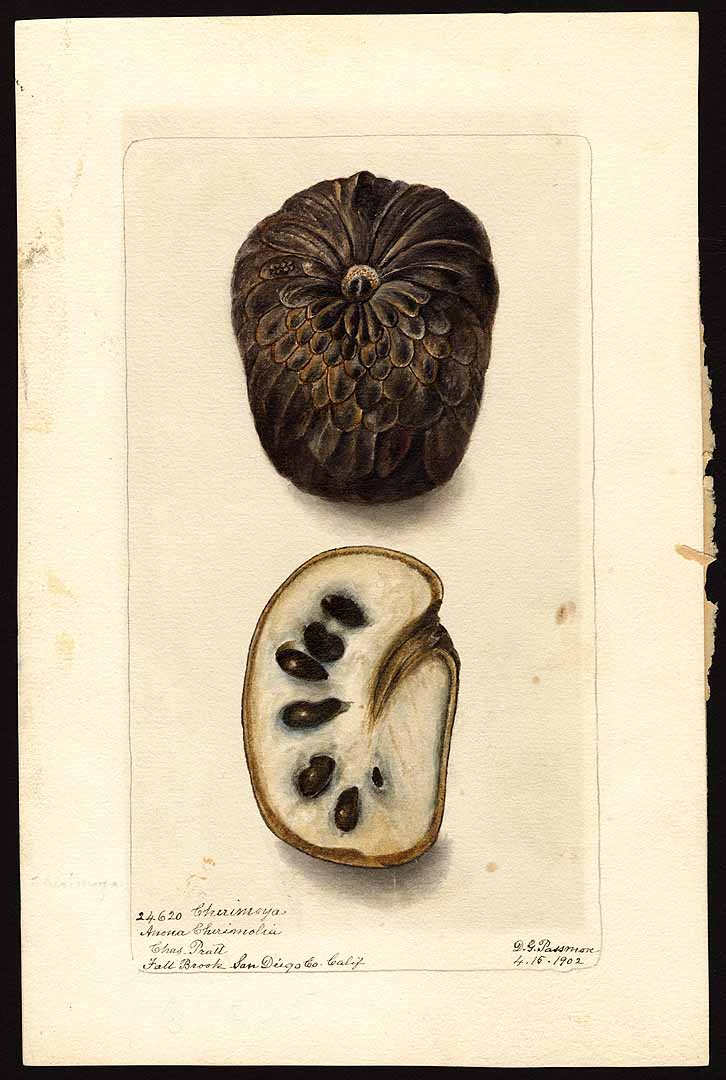! Nouveau site ici !
Vita > Plantae > Magnoliophyta > Magnoliopsida > Magnoliales >
Annonaceae > Annona
Annona cherimola
(Chérimolier)

 | ****
| ****
Vita > Plantae > Magnoliophyta > Magnoliopsida > Magnoliales >
Annonaceae > Annona
Annona cherimola
(Chérimolier)

-3,5/-4°C
Un petit arbre à feuilles caduques atteignant 6 à 10 m de haut. Dans certains endroits, les arbres conservent leurs feuilles toute l'année. Il a un tomentum velouté brun sur la face inférieure des feuilles... (traduction automatique)
→suite
⬀
Le  donne accès au menu
donne accès au menu (c'est votre point de repère) 😊 ;
En dessous vous avez la classification, à partir de la vie (Vita, premier rang) jusqu'à la classe au dessus de la plante, dont vous trouvez ensuite le nom scientifique/botanique (latin) puis le nom commun (français), le cas échéant ;
C'est aussi un lien vers la fiche complète (tout comme la ✖, en bas à droite, et le +, en dessous de la description) ;
Vient alors l'illustration (ou ce qui la remplace, en attendant), la comestibilité :
Et en bas
⬂





